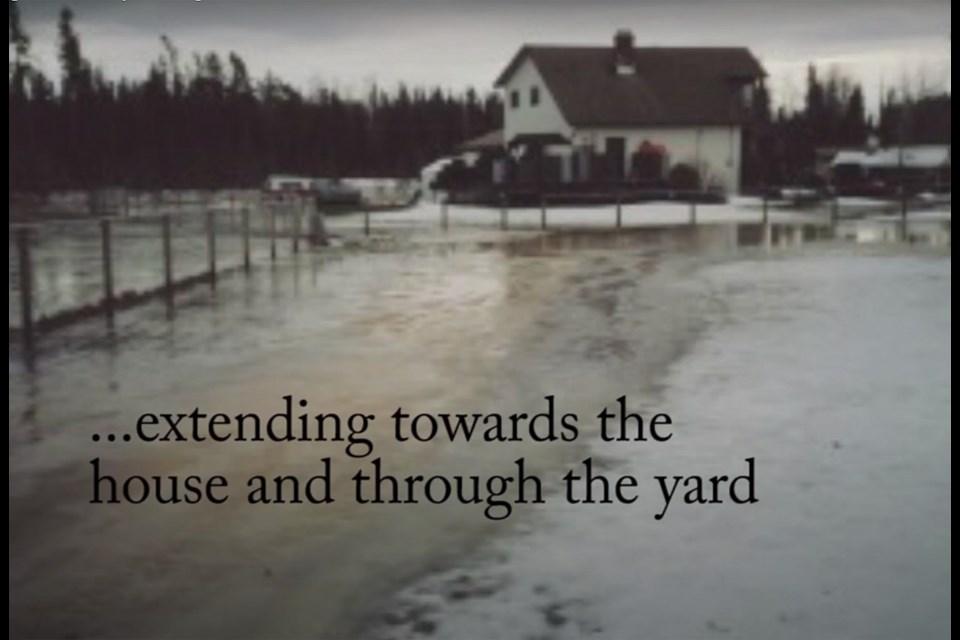After watching seasonal runoff flood her property, threaten her home and wash out her road access, longtime Beaverly resident Maria James decided to take action and built a 900-foot-long dike to protect her land.
When James bought the land roughly 16 km southwest of Prince George to develop an equestrian facility, her 7.77 acres on Foos Road wasn’t prone to flooding.
“It wasn’t a swamp in 1976, when I bought it, because horses don’t do well in swamp,” she said. “(But) In 2020, it destroyed most of our road, destroyed most of the access to our place. The water was running right under the snow and spread out right over the property. We were running pumps all year long to get rid of the water.”
After suffering seasonal flooding again in 2021 and 2022, James decided to take action to save her home.
In the summer of 2022 she found a trucking company doing a project nearby that required relocating 50 truckloads of soil. She hired a local contractor she had used before to turn the truckloads of dirt into a dike 900 feet long, three feet high and four to five feet wide at the base.
“I said, ‘One of these years it is going to take the whole house,’” James said. “The dike was created to protect my property and house from possible disaster…this was the first year we had no rivers, creeks or signs of flooding. What a relief.”
She believes the extension and development of Dave Road near her land, and the removal of a beaver pond in the area, are what caused her property to flood three years in a row. James’ assessment has not been verified by a qualified professional and the Citizen could not independently assess her claim.
“This story is a warning for rural residents to be vigilant when development is happening and to consider the impact it may have on their property and them,” she said. “I would not have been able to sell my property, knowing the (new) owners would be flooded out.”
Regional District of Fraser-Fort George chairperson Lara Beckett, who represents the Beaverly area, said she spokes with James about the flooding, but hasn’t heard from other property owners in the area having the same issues.
In the regional district, if a development is allowed under the official community plan and zoning for the area, than district staff have little involvement in the design of the project, she said. Final approval of any new roadway is up to the Ministry of Transportation and Infrastructure.
But it regional district residents do have flooding issues, reaching out to their local elected official and regional district staff is a good place to start, she said.
“With climate change and (extreme) weather events, these things are going to happen more often,” Beckett said.
In an email, a spokesperson for the Ministry of Transportation and Infrastructure said the ministry facilitates the development of rural roads and subdivisions, in accordance with provincial standards, environmental legislation and best practices for water flow and drainage.
"After the ministry has concluded its part in the rural subdivision process and lots are created, landowners are responsible for developing lots in accordance with local government policies, bylaws and provincial legislation," the spokesperson said. "Drainage patterns can be impacted by various factors including natural shifts or changes to lands upstream, which are out of ministry jurisdiction. If a resident notices flooding or water damage to any road infrastructure, such as plugged culverts, they can contact the local ministry district office to have the concern assessed."



